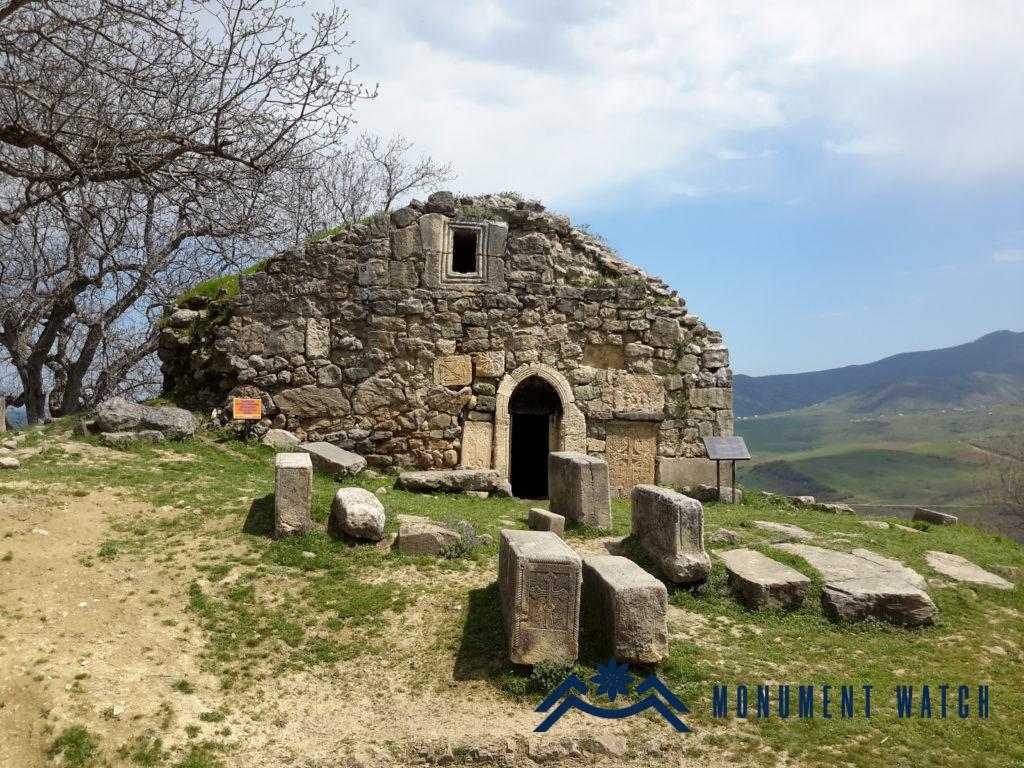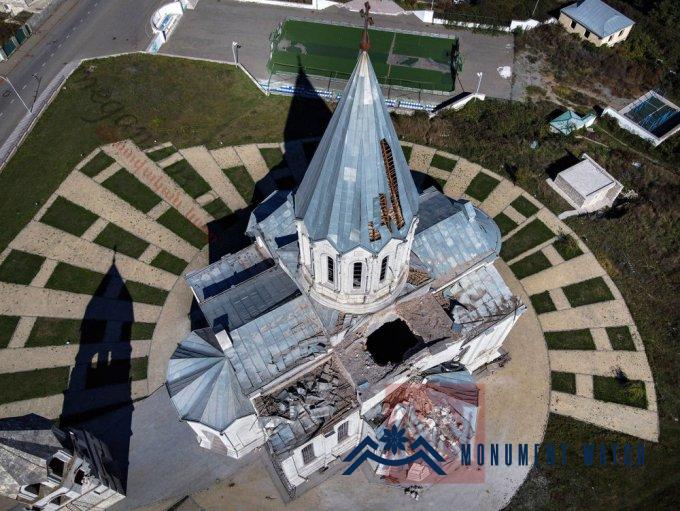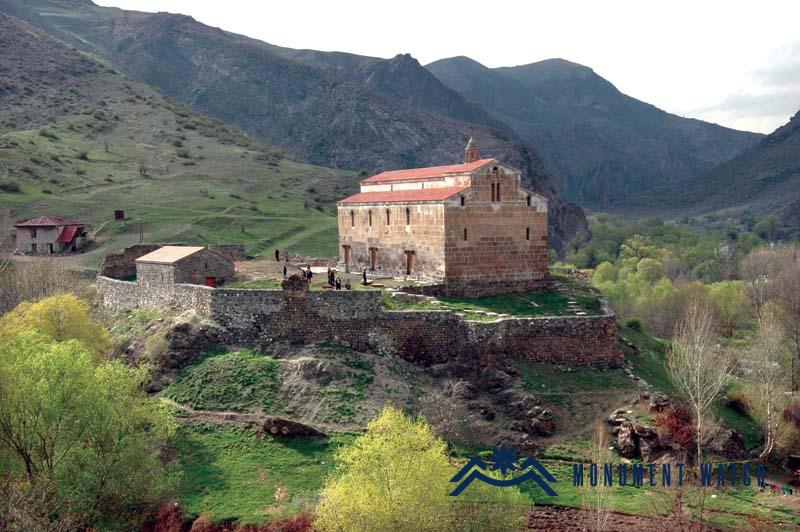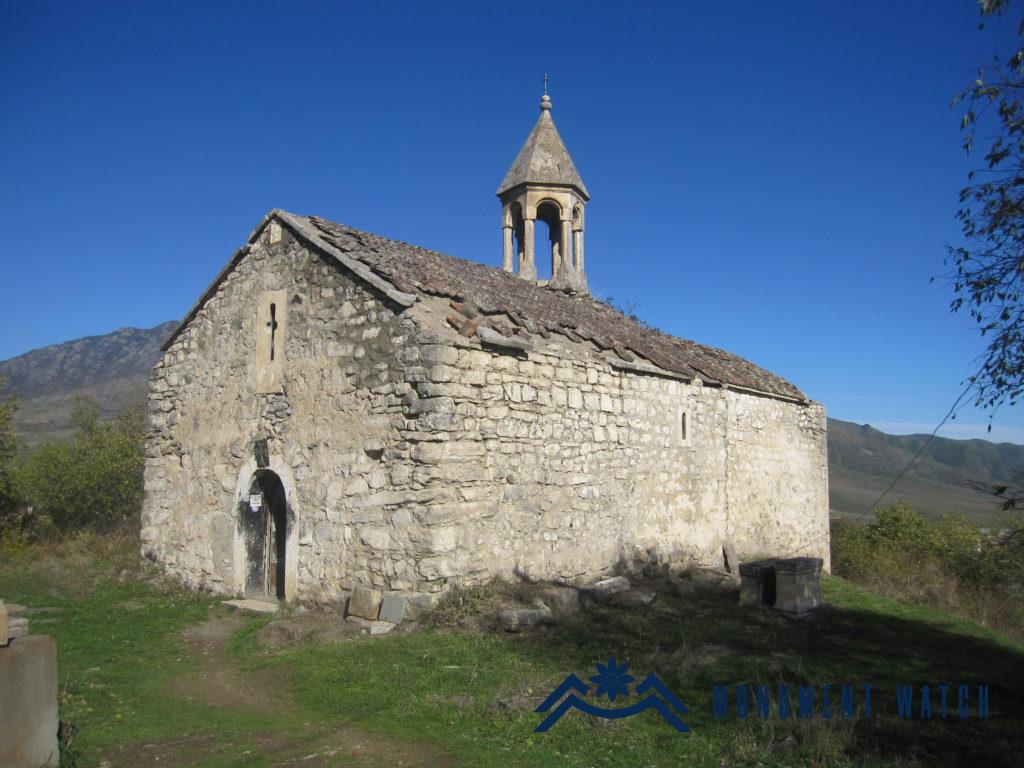
Location Spitak Khach Monastery is located on a hill in the village of Vank, directly northwest of Hadrut city in the Artsakh Republic. History The name of Spitak Khach monastery is related to a legend, according to which after the martyrdom of St. Gregoris, his patriarchal staff and the pectoral crystal cross were originally kept in Amaras, where his remains were buried. After the desolation of Amaras, these relics were moved to Gtchavank, and the crystal white cross to the monastery near Hadrut, from which it gained its name of Spitak Khach (White Cross). Sargis Jalalyants, who visited here in the middle of the 19th century, writes in his travel notes that the cross “was visited by numerous pilgrims to sacrifice rams and calves. ․․․In honor of this cross, a church was built here, it was turned into an episcopal see and an independent diocese was allocated. Here I saw the kontakions of four catholicoses for the establishment of this see, namely Hovhan, Yesayi, Nerses and Simeon, [which were given] to the descendants of priest Srapion, who from the generation to generation were and are now the overseers of this church and cross. The elders tell that due to carelessness, it happened that the handkerchiefs with which the cross was kept wrapped were burned, with which also the cross, but the cross was not damaged in any way, only a small crack appeared inside, after which the cross was silver-plated and carefully kept (Jalalyants 1858, 263). The exact date of the foundation of the monastery is not known, the oldest of the preserved inscriptions, engraved inside the church, under the khachkar of the northern arch, is dated to 1333: “I – Sirok, erected this cross for my father Khutlap in the year of 1333” (Barkhutaryants 1895, 68). Further inscriptions testify to the renovations of the church.
Location St. Stepanos Church is located in the south-western part of Togh village in Hadrut region of the Artsakh Republic, near the old cemetery (Fig. 1).
Location Holy All Savior Ghazanchetsots Church of Shushi is located in the central part of the city, 1378 m above the Karkar valley. Thanks to its elevated location, it dominates the entire plateau (Figs. 1, 2).
Location Tsitsernavank is located on the northwestern edge of the namesake village in Kashatagh region of the Artsakh Republic (presently the Lachin region of Azerbaijan), in the historical Aghahejk canton of Syunik (Figs. 1, 2).
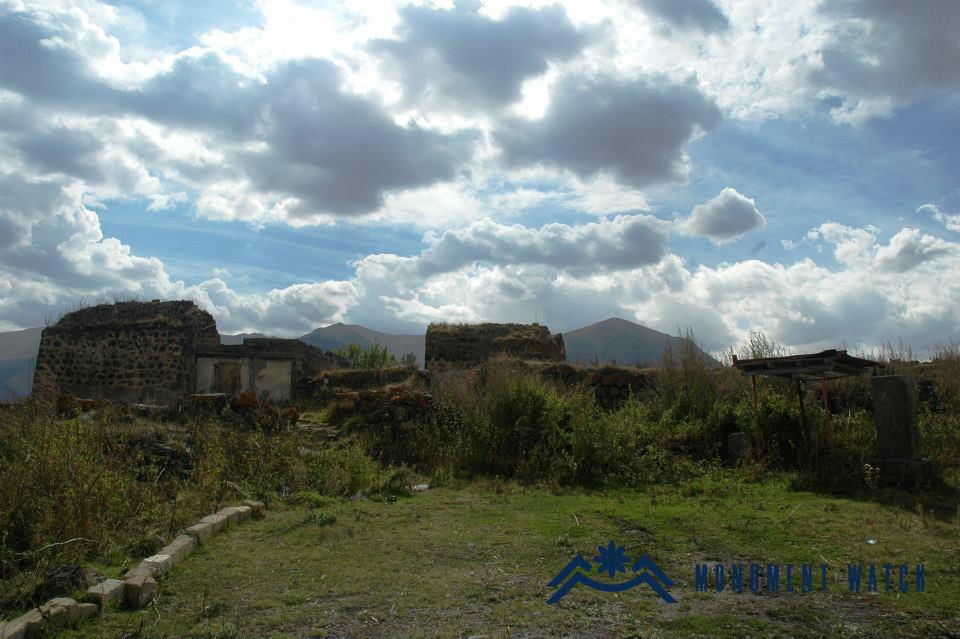
Location Tsar village is located in the upper reaches of the Trtu River, at an altitude of 2030-2050 m above sea level on an extensive mountain plateau and is surrounded by deep gorges (Fig. 1). St. Grigor and St. Sargis churches of Tsar are located in the namesake village in Nor Shahumyan region (Karvachar region) of the Artsakh Republic and are currently occupied by Azerbaijan. Historical overview In the Middle Ages, Tsar was a center of princely seat, the seat of the namesake princely house. The role of this princely house increased from the end of the 12th century, when Prince Hasan I Tsaretsi married Dop – the sister of Zakare and Ivane Zakaryans. Becoming in-laws with the Zakaryans and with their support, the Tsar princely branch ruled over the entire Verin Khachen. Dadivank also passes to the residents of Tsar (Petrosyan, 2009, 11-14). In the 18th century, the extensive village was deserted, depopulated of Armenians, and Kurds from the Parakhkanli tribe settled here. Tsar starts to be called Zar. During Soviet years Tukish speaking Kurds lived here. Until the 1940-1950s there used to exist four churches in Tsar, a large cemetery with khachkars, and two monasteries near the village. The main church was located in the village centre almost adjacent to the presently standing Saint Sargis church. In the 1950-1960s the majority of Armenian monuments was deliberately destroyed, the stones were reused in various buildings (Fig. 2).

